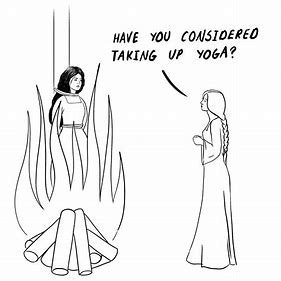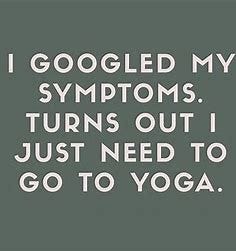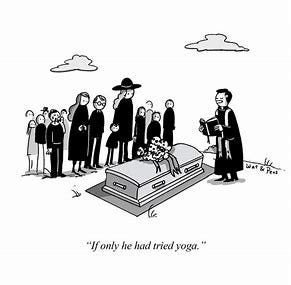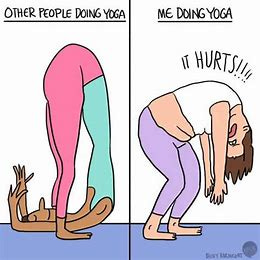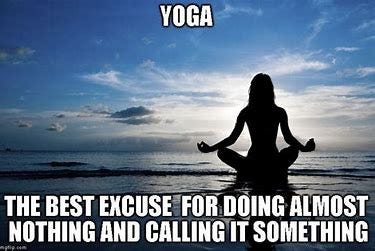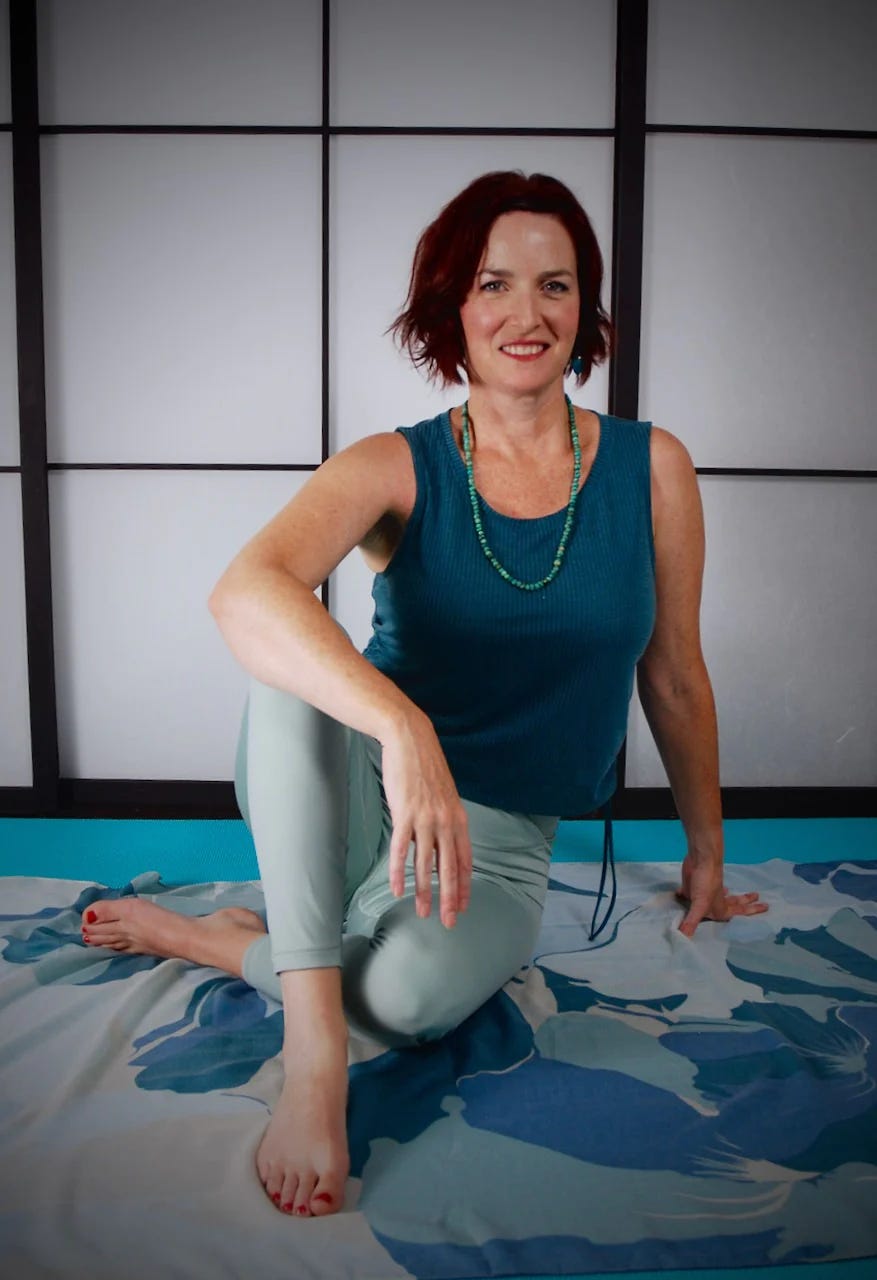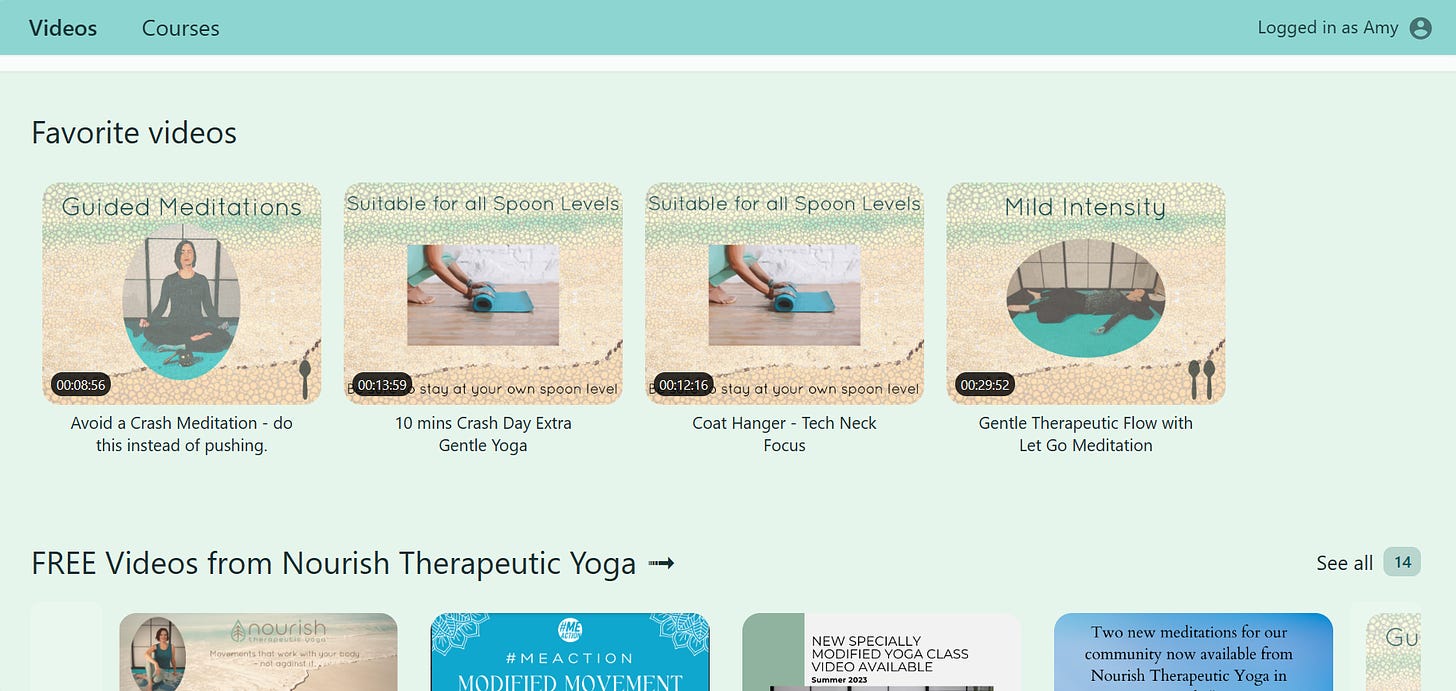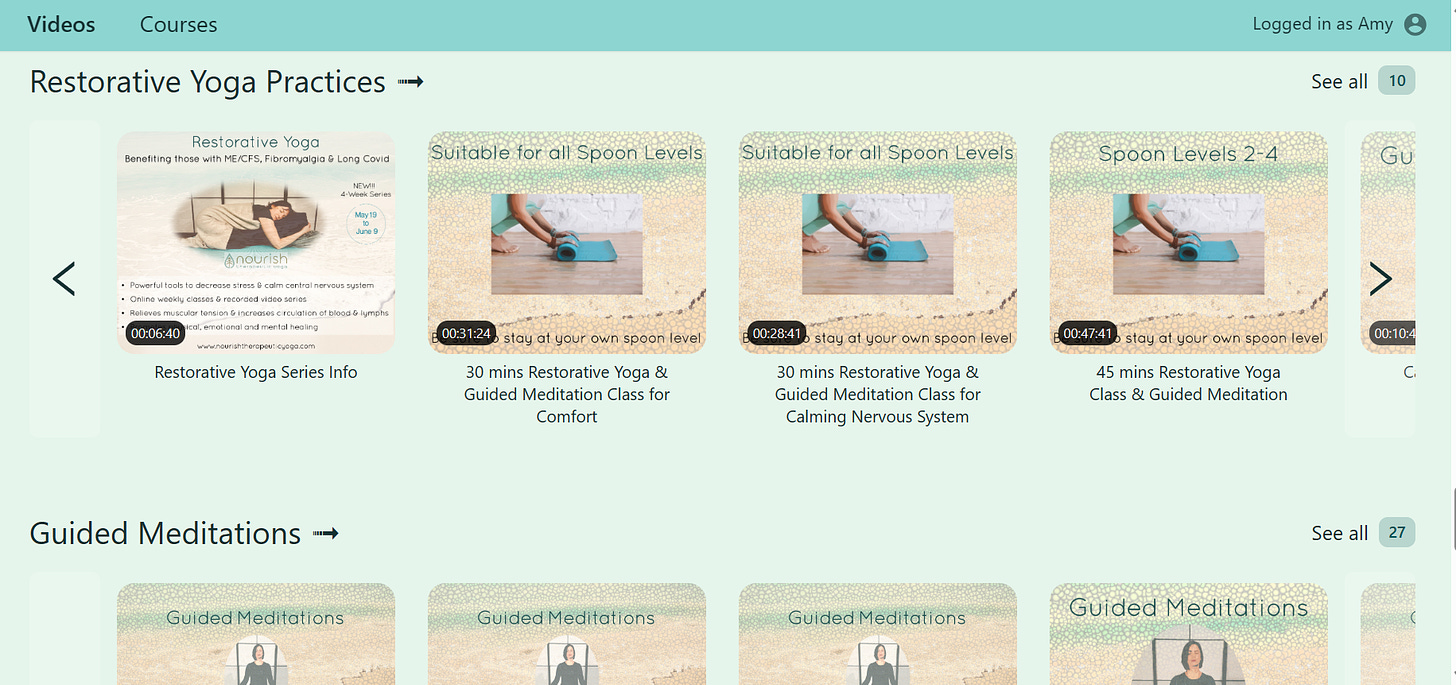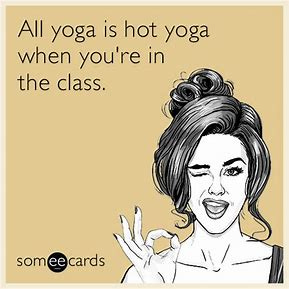Meet Amy - Fellow Spoonie Nourish Member. She is a talented writer and blogger offering a refreshing concoction of wellness resources and stories for those interested in COVID, long COVID, ME/CFS, and other health conditions. Served straight up, with a dash of humor. Here's her take on the 'ol question - "Have you tried Yoga?"
Now, I have to ask…
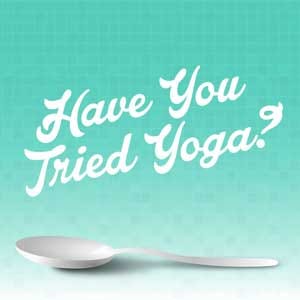
Dear friends, how many times in your life have you been telling someone about a seemingly intractable physical or mental health concern, only to have them ask this enraging question? (You can also sub in acupuncture, Chinese medicine, meditation, sauna, cold plunges, or any other ‘alternative’ type treatment or activity that may have worked for them, their cousin, or their aunt’s pickleball partner who had a condition that shared maybe one or two symptoms with yours, but was otherwise nothing like what you’re going through).
You needn’t be a spoonie to have experienced this particular form of infuriation. The insinuation that laying or standing on a foamy mat doing sun salutations, downward facing dog, or cat-cow could possibly cure you of your chronic pain or depression seems at once ludicrous and dismissive. This is particularly true when you are at the depths of despair over your condition, when you have had to alter your life so significantly to make room for your illness that you are unable to work, parent, socialize, or engage in life the way you used to.
-
In elementary through high school, I won the Presidential Physical Fitness Award every year…until 10th or 11th grade when they added the flexibility test and my years of coming out on top came to a grinding halt. I was never able to reach my toes, let alone reach past them. Still can’t.
-
In my 20’s, when I was active and carefree and living in NYC, I went to a free yoga class offered as a perk through my job. It was at a real yoga studio. During this class, I looked over at a woman who I assumed to be in worse physical shape than I was (based on her appearance, I’m now ashamed to say), and she was able to stretch farther than me. This made my immature, prideful self MAD, and I stayed away from yoga for over ten years.
- In my 30’s, during my years of chronic, near daily migraines, a well-meaning colleague asked the dreaded question. In an effort to stay open-minded and to try anything that might work to heal these headaches, I signed up for some classes at a local community studio. While I liked the communal aspect of the classes, the yoga poses that involved bending sideways or forwards or lying down just made my headaches worse. I stopped going.
- Sometime during these years, I purchased a gentle yoga DVD. At the time, I loved exercising at home doing various DVD-based workouts, mostly cardio and weight-lifting. Although if pressed, I would have told you that I didn’t consider yoga to be exercise, I wanted a DVD that would allow me to have a little movement on the days when I needed to take things slow. Plus, there was no one there to see how inflexible I was and no one I’d be in competition with.
- About eight days after I got COVID-19, when I felt like I was rounding a corner on recovery from the acute illness, I rolled out my yoga mat and popped in my DVD. The next day, I physically crashed and became very acutely sick again for weeks. Yoga was obviously the problem.
(I kid. Any physical activity would have been the problem, but it was very convenient for me to blame yoga - a no-love-lost kind of a thing).
And then a funny thing happened
With my particular version of Long COVID came an intolerance to any kind of physical or significant cognitive exertion, a symptom known as post-exertional malaise (PEM). PEM is a hallmark symptom of ME/CFS (myalgic encephalomyelitis/chronic fatigue syndrome), and for me, it involves the ability to initially engage in physical or cognitive activity, but then a crash the next day or two days later that might last days, weeks, or months. One crash I had in 2021 after a stressful week at work and then a weekend hiking trip lasted for years.
When I was at Ithaca College for my two-day CPET in July 2022, the exercise physiologist who conducted the test (and who had published many studies on ME/CFS) told me, “this is not an illness you can walk your way out of. All of your exercises need to be on the floor - nothing that increases your heart rate more than 20 beats per minute.”
Oh, how the mighty had fallen. In the before times, I was working out 6-7 days per week, about half of that time at a high intensity. Now I was relegated to the floor doing bridge presses and leg lifts. It was supremely depressing and one of the things I grieved the most, aside from losing my career.
The exercise physiologist not only told me that my exercises needed to be supine; she emphasized the importance of getting regular movement, even when I felt fatigued and highly symptomatic. Keeping as much strength as possible, massaging the fascia, and moving the lymph around are all really important, even if the movements are super gentle.
A few months later, I got an email from #MEAction announcing a free yoga class for people with ME/CFS. At this point, I was 2.5 years into Long COVID and ME/CFS and I had to surrender to the fact that, in the absence of a sweat-soaked, heart-pumping cardio session, I was craving an organized “exercise” experience (it’s probably more accurate to call it “movement”). I signed up for the free class and tried to set aside all expectations of what a yoga class should be like for me at that point.
Meet Shannon of Nourish Therapeutic Yoga
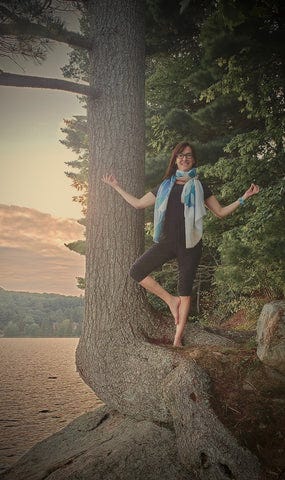
That free virtual class was so different from anything I had ever experienced. Shannon explained that she was someone with lived experience of a fatiguing chronic illness, so she understood what it was like to push and crash from overdoing it. I was impressed that she was able to combine firsthand knowledge of living with these illnesses with training and certification in yoga. She also explained that the goal of her class was not to push yourself, but to connect breath with movement and to calm the nervous system.
I certainly felt relaxed by the end. But I was still a little skeptical. For one thing, the class was only 30 minutes long, and there was talking in the beginning and a guided meditation at the end, making the total time in any poses about 15-17 minutes. And I use the word “poses” loosely; the movements were often so subtle, so vastly different from what they are in healthy-person yoga classes, that I quietly wondered if there was any real benefit to doing them.
Something told me to get past my shit and to sign up for Shannon’s weekly Wednesday class. In retrospect, I think it was her way. Shannon has a beautiful voice, so soothing and calming. Not to be too dramatic, but I felt something akin to love coming from her voice. Something that said, “I’m here, I’ll hold you, come along with me.” It was the voice of someone who knew intimately what it felt like to be at your lowest from such a debilitating illness.
So I showed up each week by Zoom, paying for each class separately for a bit (I still needed an “out” for when I would inevitably reject yoga yet again). I jokingly started telling friends and family that I was taking “gimp yoga.” I used this phrase so much that it became commonplace for me to turn down Wednesday plans by saying, “no, sorry, I can’t: I have gimp yoga that day”. 🤦🏼♀️
What I slowly came to realize regarding those early classes was that I was still very much stuck in my overachiever mindset (for those of you who are new here, I wrote a whole post about Saul, my overachiever). I wanted Shannon’s class to be the kind of exercise I had always done, the kind that would challenge my body in a good way. My brain craved the structure, the discipline, and the ‘burn’ you get from taxing your muscles. But my body could not withstand any of that without suffering the payback effects for days or weeks later.
Over time, I found that once her class was over, I felt calm and centered. And I soon connected the dots between brain and body: “oh, right - you should be looking for calm right now. That’s the whole point.” Pacing, rewiring the brain, addressing nervous system dysregulation. This is what every recovery book and video I consumed discussed, what my therapist with ME/CFS coached me on, what I knew in my heart was the answer, even if my mind was still stuck in its four-plus decades of old patterns of productivity and achievement.
I bit the bullet and signed up for her monthly membership maybe a month into the weekly classes, and I haven’t looked back since.
Can serious health problems ever be totally resolved with yoga alone?
From the bio page on Shannon’s website:
“I will not give false hope and say that yoga will cure you. But, from personal experience I know that true gains can be made.”
Has Shannon’s therapeutic yoga cured me of my Long COVID and ME/CFS? No, not instantly or miraculously.
And also, yes. Her class is an integral part of my toolbelt of resources that has contributed to the substantial improvement I have made over the last year or so.
Here are some of my favorite things about Shannon and the classes:
-
The weekly classes happen at 1pm ET, when my house usually happens to be empty and quiet and I can really settle in for the class.
-
I often do the class in my pajamas 🤭
-
You would think being so limited in the range of movements spoonies can do would make the class boring after a while. Shannon amazingly manages to always find ways to keep the classes fresh, even with such limited movement available to most of us.
-
Shannon calls her classes “spoonie-friendly” and she means it. She always offers modifications for those who are bed- or couch-bound, those who can lay on a yoga mat but may still have limitations (that’s me, most of the time), or those who can do the poses seated.
-
-
Shannon constantly reminds us not to “go into any gripping or straining.” This is a really helpful reminder for me because I sometimes catch myself slipping back into “challenge yourself” mindset. The movements are gentle and Shannon always tells us what the benefits are of each seemingly minor move. She is also always expressing concern about and offering modifications for any attendees who may have hypermobility issues or Ehlers-Danlos Syndrome, which often goes hand in hand with ME/CFS and Long COVID.
-
My monthly membership comes with the weekly Wednesday class and also gives me access to Shannon’s extensive video library. There have been many Saturdays when I’ve rolled out my mat, gotten my laptop ready, and logged in to take a recorded class. Her video library is arranged by spoon-level or also by problem (for example, she has a video with super helpful poses addressing “coathanger” pain, which affects the back of the neck and shoulders and the top of the back). She also has recorded meditations, crash recovery videos, and videos showing modifications based on spoon-level.
-
Shannon is always deepening her knowledge and training. She offers additional series (separate from the cost of membership, but very reasonable) for restorative yoga or somatic yoga (or both). These are often on Fridays and her latest series, a Soma-restore mini-series, is being given in April at two different times on Fridays to accommodate more attendees.
-
There is something really wonderful about seeing all of the other attendees on screen, at all different levels of health, engaging together in this practice for our wellness. You’ll see attendees who are lying in bed and can only visualize the moves (Shannon assures us that the brain doesn’t know the difference between actually doing a pose and visualizing it, so there are still benefits to practicing this way). For some, this may be the only time they can engage with anyone outside of their home. To be in community with folks who get what you’re going through is very heartwarming. Shannon holds space for a community chat after each class as well as a monthly social hour session. (I tend to not feel much like talking afterwards, which is totally okay. I just quietly leave the Zoom after “namaste”).
-
Shannon ends every class with shavasana, or corpse pose, where we listen to a guided meditation that she voices. Super relaxing and a great way to seal in the nervous system regulating benefits of the whole practice.
Bringing this in for a landing
Okay, okay, I admit - I’m a yoga convert. So much so that sometimes I lay on my mat during class and daydream about the day I’ll be fully recovered and yet still attending Shannon’s Wednesday class. The mid-week opportunity to reset and recharge is something I do not plan to take for granted. In fact, I have talk therapy on Wednesday mornings, so Wednesdays have become my “leave me alone, I’m self-caring” days.
That said, there is no one who wouldn’t benefit from Shannon’s class. If this post has piqued your interest in learning more about Shannon, her training, and her practice philosophy, check out her bio page here.
If you’d like to see for yourself how awesome she is, Shannon is offering 25% off any service to readers of The Tonic. WOW. Just enter TONIC25 as the promo code when you are checking out. Use it for a single class or for her upcoming somatic series in April, for example. Here’s a link to her site.
Alternatively, you can get $15 Canadian dollars toward a class or membership and also help me get a $10 credit (free yoga for your favorite Substacker, woohoo!) by using this referral link!
If you are able and so inclined, I highly recommend the monthly membership. You can even get a free one-week trial. At four classes per month and 24/7 access to the video library, it is a real steal. (It’s an especially good deal if you’re in the U.S., since Shannon is in Canada and the exchange rate benefits us).
As much as people might hate the question, it seems like many more people these days are giving yoga a try. I got an email yesterday from the U.S. National Institutes of Health (NIH) National Center for Complementary and Integrative Health on the fact that many more people are practicing yoga now than they did 20 years ago (15% in 2022 vs. 5% in 2002). Here’s a link to their page about yoga.
So, tell me: have YOU tried yoga? Meet me in the comments and let’s kick this controversial question around some more.
And if it helps, just remember:
Get more of Amy's light-hearted, heavily resourced newsletter about long COVID, ME/CFS, and other chronic illnesses. Info and whimsy included!
CLICK HERE!!!
FOR AMY'S AMAZING BLOG: THE TONIC


